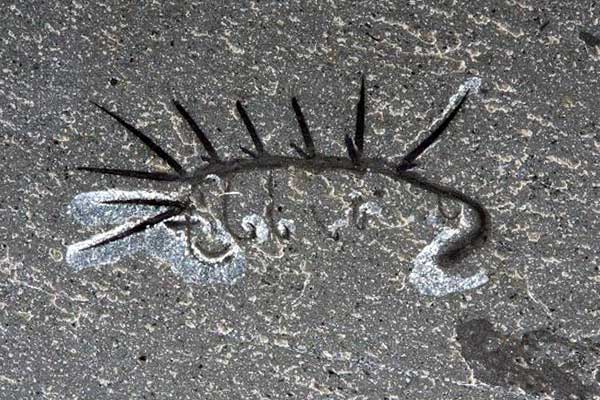
This spiny, worm-like creature had relatives all around the world
Published: July 31, 2013
The 505-million-year-old Burgess Shale in Canada’s Yoho National Park is famous for its bizarre marine animal fossils, most of which are thought to be found nowhere else on the planet.
But a recent study led by University of Toronto ecology & evolutionary biologist Jean-Bernard Caron and published in the July 31 issue of the British scientific journal Proceedings of the Royal Society B suggests that one of its most famous animals had relatives spanning the globe.
Hallucigenia sparsa is a spiny, worm-like animal with numerous pairs of soft walking legs that was originally discovered in the Burgess shale over 100 years ago.
“From Canada to the United States, China to Mongolia, and the United Kingdom to Australia, we now know that during the Cambrian period Hallucigenia had relatives all over the world,” said Caron, who is also curator of invertebrate palaeontology at the Royal Ontario Museum (ROM).
Using modern techniques, a team of researchers from U of T, the ROM and the University of Cambridge re-examined Hallucigenia specimens. They noticed that its defensive spines strongly resemble a group of small, isolated spiny elements found fossilized worldwide, with both groups of spines having subtle surface ornamentation and a structure resembling a stack of ice cream cones.
These characteristics were sufficiently unequivocal that the researchers concluded the small isolated spines were likely related to Hallucigenia. Along with its relatives, Hallucigenia formed a group of animals that spanned the planet’s ancient Cambrian seafloors. Further, the fact that these defensive spines existed worldwide during the Cambrian period, suggest that predation was a prevalent fact of life at that time.
“Because the spines were more resistant to decay, they are preserved around the globe in many conventional fossil deposits," said Caron. "It is only in exceptional sites like the Burgess Shale that we find completely articulated specimens with spines attached to the rest of these delicate soft-bodied animals,” he said.
The fossils also bear a striking resemblance to Hallucigenia 's modern relatives, the velvet worms, which are scavengers living in fallen logs and jungles throughout the world. Although their habitats are different, the scientists believe the Cambrian forms were probably micropredators or scavengers like the velvet worm.
Kim Luke is a writer with the Faculty of Arts & Science at the University of Toronto.



